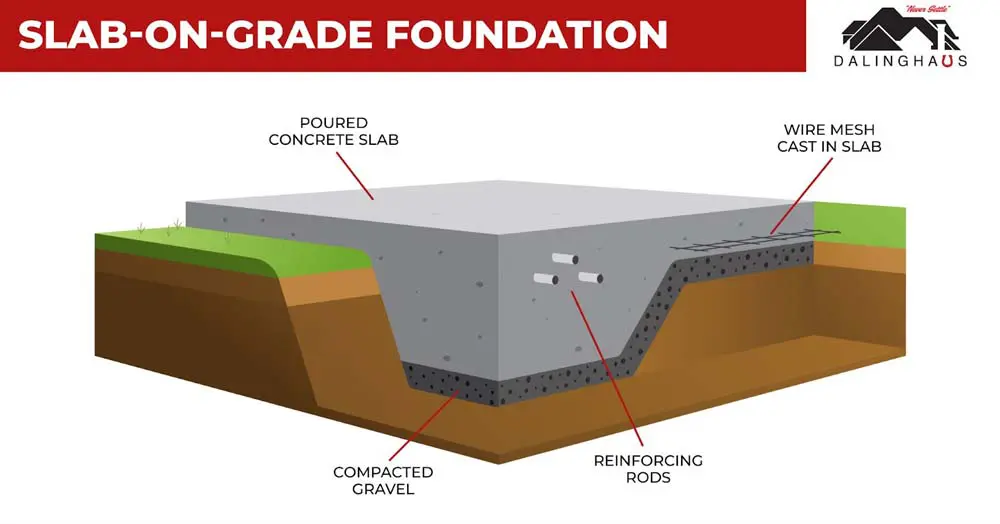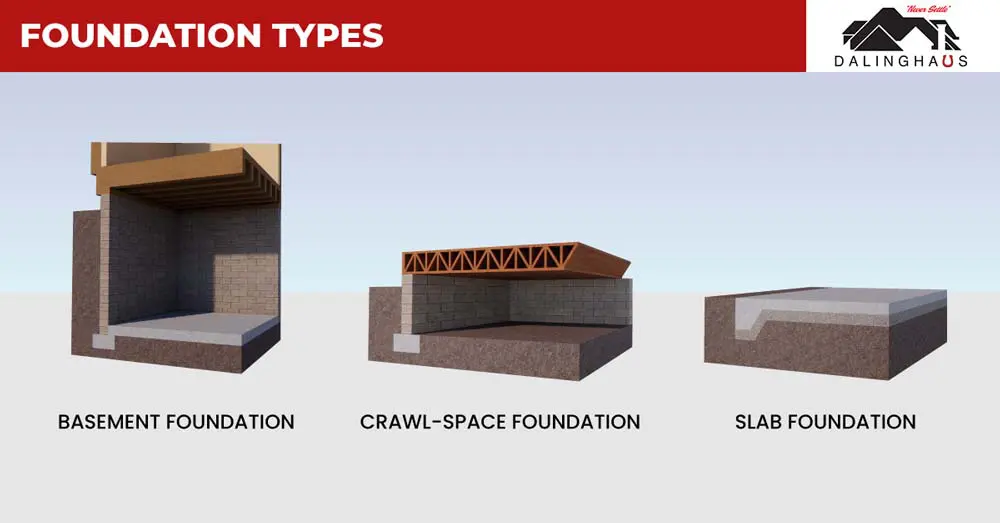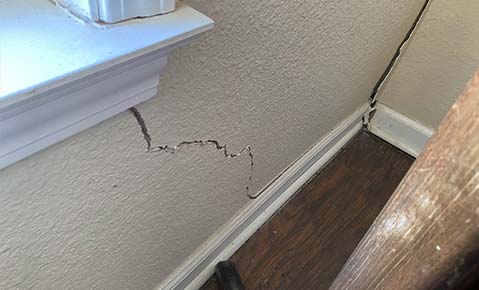In some regions, a simple concrete slab is one of the most common types of foundation. This foundation option offers a few benefits, including being relatively affordable and easy to build compared to other foundation types.
However, there are also a few specific problems with homes built on slabs you should be aware of before you purchase one. In this article, we’ll discuss the top three issues with concrete slabs you should know about. Then, we’ll cover a few of the best alternative foundation options.
Slabs Can’t Handle Freezing
One of the biggest problems with slab foundations is that they are not suitable for a large portion of the United States. Generally, you can only choose this foundation type in areas that do not experience seasonal freezing and thawing.
The reason for this is that a slab foundation does not extend down into the earth below the frost line. Because slabs don’t go below the frost line, they will be incredibly vulnerable to the significant shifts that soil can experience as it freezes and thaws.

When soil freezes, it will expand beyond its normal size. This expansion (known as a “frost heave”) can shift and even crack a concrete slab. While there are some types of concrete slabs that claim to withstand this effect, the truth is that nearly all concrete slabs on grade will be damaged if they experience a frost heave.
By contrast, other foundation types–including full basement foundations–extend well below the frost line, which makes them much more capable of resisting the damage a frost heave can cause. For that reason, concrete slabs are dependable only in areas that remain warm year-round.
No Space for Storage or Utility Lines
Another significant downside to owning a home on a concrete slab is that you’ll be missing out on the functional space that a full basement (and even a crawl space) can provide. In these foundation alternatives, you’ll have plenty of space in which to store your belongings and run utility lines.
In contrast, a concrete slab is nothing more than a layer of concrete that sits directly between your house and the ground below. Since that’s the cause, you’ll need to find an alternative area for storage, and the workers who build homes on slabs need to find a different way to run their utility lines.
The most common solution is to embed pipes and utility lines under the concrete slab itself. While this is a viable option, it can present additional frustration in the future. Mainly, because your utilities will be under in your concrete slab, it will be incredibly difficult to access them in case they require repairs.
Cracks Can Be Common
Our final reason why concrete slabs may not be the best foundation option is that they tend to be prone to cracking. As mentioned above, frost heaves will cause a concrete slab to break in most cases–but there are other common causes of cracked slabs, as well.
For example, it is common for foundation settling to cause cracks in your concrete slab, some of which will be severe enough to require immediate attention from a professional. Likewise, when large tree roots expand below your concrete slab, they can cause cracks, too.
Regardless of the source of the crack in your concrete slab, you’ll likely find it difficult to repair. While crawl spaces and full basements provide foundation repair teams with plenty of space in which to assess and resolve foundation problems, concrete slabs do not.
Slabs Vs. Crawl Spaces Vs. Basements
While concrete slabs remain popular despite their drawbacks, there are plenty of other foundation styles that often prove to be more beneficial. Two of the leading alternatives to concrete slabs are crawl spaces and full basements.

Crawl spaces include concrete footings that extend below the ground while also lifting your home a few feet off of the ground. This design provides a narrow, empty space between your home and the soil. That small space acts as a buffer in addition to providing some useful storage space.
A basement foundation includes full walls and extends deep enough into the ground to provide another entire floor for your home. This depth makes your foundation better capable of withstanding frost heaves and gives you plenty of functional space, whether your basement is finished or not.
Compared to crawl space and basement foundations, concrete slab foundations are less expensive and easier to build. As such, you should weigh these pros against the concrete slab cons we mentioned above before you settle on the foundation type that is right for you.
Need More Foundation Advice?
While the article above provides some key insights into the downsides of concrete slabs, there is plenty more to learn about foundations. If you feel the need to get more advice about the pros and cons of different foundation types, it is always best to consult with a professional.
If you live in Southern California, Nevada, or Arizona, you should make Dalinghaus Construction your first choice for any foundation evaluations and repairs. We have the ideal skills and experience to resolve just about any foundation-related problem you can imagine. Reach out today to learn more about the services we can provide!






